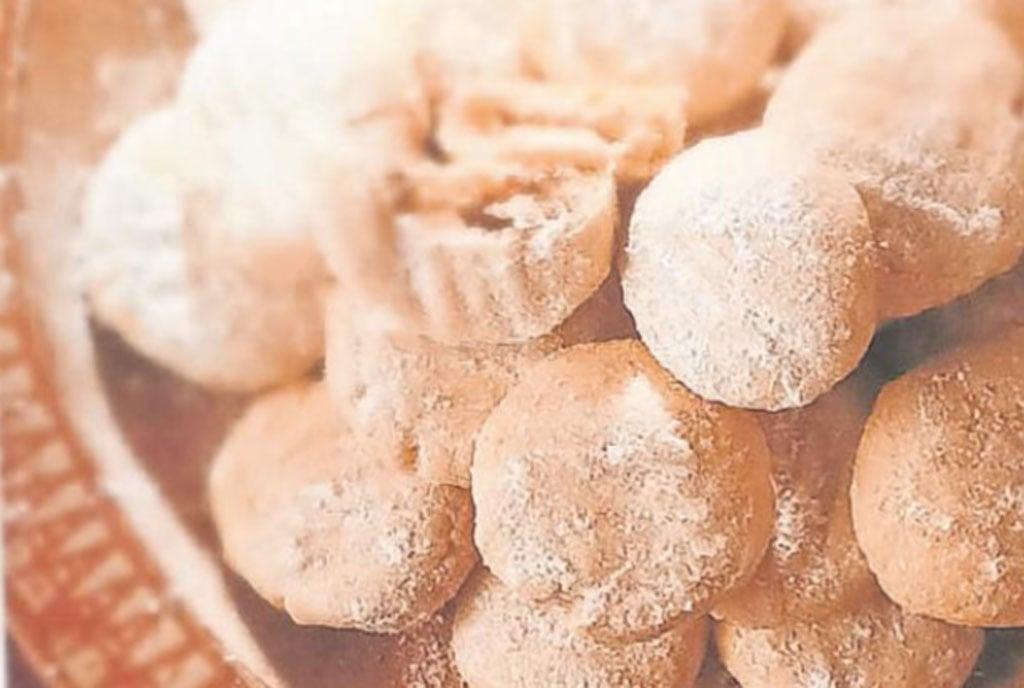Africa-Press – Seychelles. Jewish people eat these short bread cookies stuffed with date paste or chopped walnuts or pistachios and dusted with powdered sugar at Purim, while Christians enjoy them at Easter and Muslims serve them at Iftar, the after sunset meal that breaks the Ramadan fast.
One of the interesting things about them is that they are made in special wooden moulds, which seal the rose scented pastry around the filling.
The dough is made with wheat flour or semolina (or a combination of the two), then pressed into special molds, traditionally carved in wood. And the fillings are fragrant with rosewater or orange blossom. In the weeks leading up to Easter, many of the Beirut sweet shops work flat out working overtime to produce enough pastries.
Palestinian-Jordanian food blogger Sawsan Abu Farah, better known as “Chef in Disguise,” makes several versions of maamoul, some with both semolina and wheat flour in the crust, others with wheat flour alone.
Sometimes she adds mastic, a sun-dried resin from trees, and mahlab, a spice made from the inner kernels of cherry pits, to her dough.
“Maamoul is usually made a few days before Eid, then stored to be served to the guests who come during the holiday and served with Arabic coffee and chocolate,” says Sawsan, who now lives in the United Arab Emirates. “Plates full of it are also exchanged as gifts between neighbors and relatives.
“Just as Easter follows Lent, Eid-al-Fitr is celebrated after Ramadan, the Muslim month of fasting. Eid lasts three days, and according to Sawsan, “Any house you go into during Eid has maamoul. It doesn’t matter if it is homemade or store bought, it just has to be present.
Of course, the ladies of the house get extra points if it is homemade, and there is the yearly competition of who makes the best maamoul in the family.
Recipes are exchanged, cookies are critiqued, it is all part of the Eid fun and festivities. Sawsan reminisces fondly, about making maamoul with friends and family when she was growing up. She remembers the “heavenly” smells of spices and roasted nuts and the fun of those gatherings.
“On the day of making maamoul, everyone is divided into teams,” she says.
“Some divide the dough into balls, others stuff them, a third team is in charge of pressing them into the molds, and if it is summer, the unlucky team is in charge of baking. They spend hours in front of the hot oven. However, since everyone is in such a good mood and spirits, chatting, telling stories, and sneaking a taste of the delicacy, hot out of the oven, no one minds.
“Maamoul, as it’s called in Syria, Jordan, Lebanon, Israel and Palestine, is called kombe in southern Turkey, and as kahk in Egypt. Kahk seems to be the indisputable ancestor of maamoul, as it’s depicted in temple paintings and carvings dating back to the Pharaonic era.”
“Even now, we pile kahk the same way, like a pyramid,” says Ahmed Hameed, a tour guide and Egyptologist in Cairo. Like maamoul in other countries, kahk in Egypt is traditional for both Easter and Eid. But in addition to nut fillings, Egyptians also have versions stuffed with agameya (a honey-walnut concoction) and loukoum (Turkish delight). How these cookies came to be associated with Easter and Eid is less certain.”
“Some say the cookies are meant to remind you that though fasting is hard, within it is a sweet reward, exactly like maamoul’s outer shell is bland but the core is sweet,” says Sawsan.
Every baker has his or her secret for making the best maamoul. For Sawsan, “the secret to a great maamoul is a good recipe with a delicate balance between the ingredients to produce a cookie that melts in your mouth yet holds its shape without crumbling. It goes without saying that using high quality dates or nuts is a must because they are really the star of the show in maamoul.”
Makes 35 to 40
Ingredients
4 cups Supreme wheat flour
1 cup unsalted raisins
1 cup unsalted diced butter
3 tablespoons rose water
5 tablespoons milk
Icing sugar for dusting
FOR THE FILLING
1 1⁄2 cup dried dates, stoned (pitted) and chopped
1 cup walnuts, finely chopped
2/3 cup, blanched almonds, chopped
1/3 cup pistachio nuts, chopped
1⁄2 cup water
2/3 cups granulated sugar
1⁄2 teaspoon ground cinnamon
Method
Preheat the oven to 160dC/325dF/Gas mark 3. First make the filling. Place the dates, walnuts, almonds, pistachio nuts, water, sugar and cinnamon in a small pan and cook over a low heat, until the dates are soft and the water has been fully absorbed and set aside. 2. Place the flour in bowl and add the butter, working it into the flour with your fingertips. Add the rose water and milk and knead the dough until soft. 3. Take walnut size pieces of dough. Roll each one into a ball and hollow with your thumb. Pinch the sides. 4. Place a spoonful of date mixture in the hollow and then press the dough back over the filling to enclose it, press the edges to together to seal. 5. Arrange the pastries on large baking sheet.
Press to flatten them slightly. Make little dents with a fork on the top of the pastries. 6. Bake in the oven for about 20 minutes and at all cost, be sure not to allow them to change color or else they will become hard. Cool slightly, and sprinkle with sifted icing sugar.
For More News And Analysis About Seychelles Follow Africa-Press






